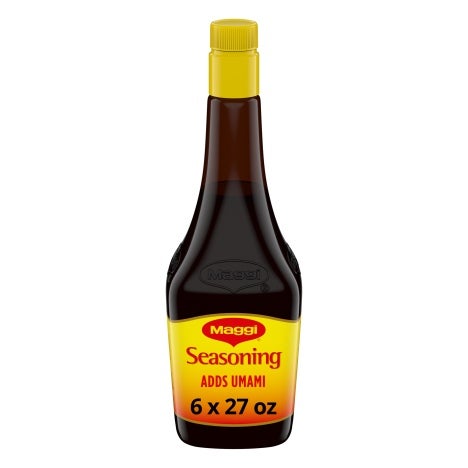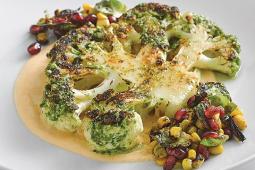
20 Fresh Cues to Implement Now
Your patrons want fresh foods and fresh preparations. Learn new ways to deliver what they want—and to entice them with fresh specialties.
Fresh. One small simple word, many powerful associations. Think about it: Baked fresh daily; freshly prepared guacamole; fresh-made rotisserie chicken. Fresh spells quality, flavor, wholesomeness, and value. There are food service concepts that stake their entire existence on the principles of freshness.
According to Datassential, fresh is on 88.4% of US menus at all price points from 80.2% in fast food and 88.4% in fast casual to 85.9%, 91.2%, and 93% in fine dining, midscale, and casual, respectively. Its uses range from salads to freshly brewed coffee.
In addition, consumers see the most value in paying more for fresh produce and protein—especially beef, poultry, and seafood—and savvy operators recognize that perception.
Sourcing
- Explore seasonal and micro-seasonal produce, from spring’s early rhubarb and summertime tomatoes and corn, to hearty winter squashes and citrus fruits
- Look for clean-label and minimally processed products and ingredients to indicate the move away from preservatives
- Emphasize in-house prep—salad dressings, baked goods, soups—wherever possible, or source items from suppliers like local bakeries
- Use blackboard menus, fresh sheets, and smaller printed menus to promote specials
- For grab-and-go items, attractive display and clean simple packaging that shows the food and is clearly stamped with sell-by time are important
Recipe Development and Prep
- Go produce-heavy on menus, particularly with items like leafy greens, salad ingredients, fresh berries and stone fruits, and other harbingers of immediacy and freshness
- Remember that for many customers, vegetarian/vegan and plant-forward options signal a commitment to freshness
- Practice root-to-shoot and nose-to-tail product utilization with produce and animal proteins—which is a powerful signifier of no-waste, freshness-first philosophy
- Wherever possible, allow patrons to customize their own orders, representing hand-selected, a la minute freshness
- Choose recipes that provide color and texture as well as flavor, particularly crisp or crunchy vegetables and brightly hued fruits
- Use fresh herbs whenever possible, in both cooking and garniture
- Build LTOs (limited time offers) and menu specials around fresh, seasonal ingredients, and train service staff to hand-sell them on message.
- Remember that whole products—whole roasted carrots rather than cubes, whole fruits, beets with the beet greens still attached—send a subliminal freshness message
- Prepare fresh foods simply and transparently through such techniques as roasting, searing, stir-frying, steaming, and other methods that let the flavor, color, and texture of ingredients shine through
Menu and Presentation
- Use descriptive menu copy and adequate detail to emphasize fresh abundance of food and beverage items
- Call out local growers and artisans on menus, websites and social media, POS materials, and other consumer-facing communication vehicles
- Emphasize made-to-order items, through menu copy, customized specialties (such as salads, sandwiches, and bowls), and/or display cooking
- Don’t neglect the appeal of décor elements such as abundant fresh flowers, fruits and vegetables on display at cooking stations and self-service bars, and even artwork of food and beverages, farms, and other natural scenes. Color, lighting, outdoor seating, and other cues can also be used to underscore the freshness message
- Offer beverage menus with flavored lemonade (such as fresh strawberry) and fruit and vegetable juices, as well as produce-infused waters and seasonally appropriate cocktails
- Train service staff to know what’s in every item, hand-sell specialties, and be prepared to answer questions about sourcing, seasonality, and prep
Sources: Datassential SNAP! Fresh, September 2018; IFMA/Datassential CPP 2016, The Role of Fresh: Operator Insights
The information provided is based on a general industry overview, and is not specific to your business operation. Each business is unique and decisions related to your business should be made after consultation with appropriate experts.
Like consumers, operators most equate freshness with scratch prep and made-to-order dishes.
The characteristics most associated with freshness are made-from-scratch (cited by 50% of operators); made-to-order (42%); made with products that have never been frozen (42%); and ingredients that have been sourced recently (40%).
Root-to-shoot prep maximizes freshness by utilizing every bit of the fruits and vegetables you source. Not only does this strategy save money on food costs, but calling out what you’re doing on the menu, or with the help of service staff, will resonate with sustainability-minded customers and help brand your operation with a halo of freshness.
For more information, take a look at 25 Ways Root to Shoot Minimizes Produce Waste.




